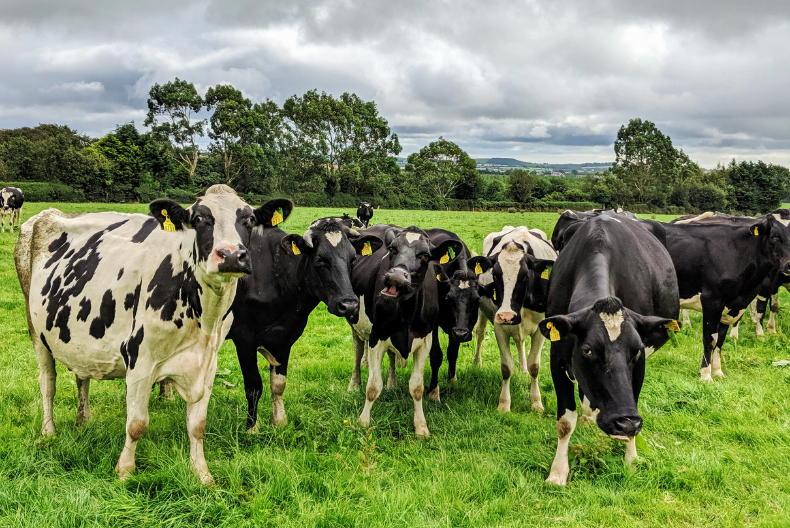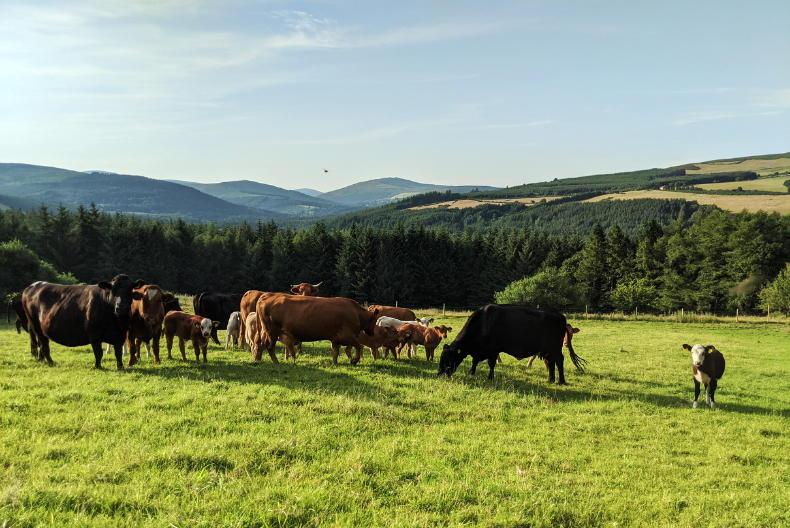Minerals
This needs to happen six to eight weeks before calving. Administer a mineral bolus or dust minerals on the silage for all cows approaching calving.
Having cows with the right mineral status will help prevent difficult calvings, metabolic disorders, retained placentas and will help produce lively, vigorous calves that want to get up and suck.
Get your calving pens ready
Clean out, disinfect, and bed your calving pens with a fresh layer of straw.
Calving gate
A calving gate is essential on any farm that is calving cows. If you don’t have one, consider getting one installed. If you do have one, make sure the head locking mechanism is working correctly before calving starts.

Colostrum
Check your freezer to see if you have any colostrum left that would have been saved from last year. If not, stock up on some colostrum substitute.
Gather some empty milk cartons that you can use to store and freeze any colostrum you are able to gather from the first few cows that give birth.
Clip cows' tails
Having cows' tails clipped before calving will help keep her clean.
Newborn calves are more likely to pick up infection when suckling an udder that is dirty. It only takes a few minutes to clip her tail, and this is definitely time well spent.
Electrolytes
Have a store of electrolyte powders at hand in case you have any calves that contract scours.
Scouring calves can get dehydrated very quickly, so having electrolytes in store to administer quickly while waiting for a vet to arrive could make all the difference.
Have your Moocall calving sensor ready
A Moocall calving sensor can monitor your cow 24/7 and will notify you when the cow starts calving.
Calf mortality can be greatly reduced by being present to assist if needs be.
If there is nothing calving, avoid the fatigue caused by constantly checking on cows, and get a good night’s sleep when you can.
Calving equipment
Make sure your calving jack is working correctly and that you have two sets of clean calving ropes.
Use a checklist:
Iodine spray.Calving gloves.Lubricant gel.Stomach tube.Colostrum or colostrum substitute (auctus.ie/calf-lamb-superstart/).Moocall calving sensor.Assisting a cow too early when her cervix hasn’t fully dilated
Give the cow time to dilate fully before going in and assisting her to calf. More often than not, when given time, cows will be able to calve by themselves.
The less you intervene the better. Pulling a calf before the cow is dilated can lead to injury and bruising and it also puts huge stress on the calf.
A Moocall calving sensor will pinpoint when calving begins, so you can give the cow the time she needs, or if you do need to assist, do so before it is too late.

Incorrect body condition score (BCS) at calving
Too high and the cow's birth canal can be laden with fat, making it difficult for her to calve; too low and the cow may be weak and lack the energy required to give birth. Cows calving in spring should have a target BCS of 2.5.
Using the calving jack incorrectly
The calving jack should only be used if a necessity. As already mentioned, try not to intervene if you can while the cow is calving.
Remember that the jack can exert the same pulling force as six people, so it needs to be used with caution to avoid injury to cow or calf. Only apply force while the cow is pushing.
Inadequate hygiene
It can’t be stressed enough how important good hygiene is around calving. Regularly clean out and disinfect calving pens to help avoid calves picking up scours or other infections.
Treating and dealing with sick calves while in the middle of calving is an unwanted headache.
For more information on Moocall's calving sensor Black Friday deal, call them on 01-969 6038 or visit www.moocall.com.
Minerals
This needs to happen six to eight weeks before calving. Administer a mineral bolus or dust minerals on the silage for all cows approaching calving.
Having cows with the right mineral status will help prevent difficult calvings, metabolic disorders, retained placentas and will help produce lively, vigorous calves that want to get up and suck.
Get your calving pens ready
Clean out, disinfect, and bed your calving pens with a fresh layer of straw.
Calving gate
A calving gate is essential on any farm that is calving cows. If you don’t have one, consider getting one installed. If you do have one, make sure the head locking mechanism is working correctly before calving starts.

Colostrum
Check your freezer to see if you have any colostrum left that would have been saved from last year. If not, stock up on some colostrum substitute.
Gather some empty milk cartons that you can use to store and freeze any colostrum you are able to gather from the first few cows that give birth.
Clip cows' tails
Having cows' tails clipped before calving will help keep her clean.
Newborn calves are more likely to pick up infection when suckling an udder that is dirty. It only takes a few minutes to clip her tail, and this is definitely time well spent.
Electrolytes
Have a store of electrolyte powders at hand in case you have any calves that contract scours.
Scouring calves can get dehydrated very quickly, so having electrolytes in store to administer quickly while waiting for a vet to arrive could make all the difference.
Have your Moocall calving sensor ready
A Moocall calving sensor can monitor your cow 24/7 and will notify you when the cow starts calving.
Calf mortality can be greatly reduced by being present to assist if needs be.
If there is nothing calving, avoid the fatigue caused by constantly checking on cows, and get a good night’s sleep when you can.
Calving equipment
Make sure your calving jack is working correctly and that you have two sets of clean calving ropes.
Use a checklist:
Iodine spray.Calving gloves.Lubricant gel.Stomach tube.Colostrum or colostrum substitute (auctus.ie/calf-lamb-superstart/).Moocall calving sensor.Assisting a cow too early when her cervix hasn’t fully dilated
Give the cow time to dilate fully before going in and assisting her to calf. More often than not, when given time, cows will be able to calve by themselves.
The less you intervene the better. Pulling a calf before the cow is dilated can lead to injury and bruising and it also puts huge stress on the calf.
A Moocall calving sensor will pinpoint when calving begins, so you can give the cow the time she needs, or if you do need to assist, do so before it is too late.

Incorrect body condition score (BCS) at calving
Too high and the cow's birth canal can be laden with fat, making it difficult for her to calve; too low and the cow may be weak and lack the energy required to give birth. Cows calving in spring should have a target BCS of 2.5.
Using the calving jack incorrectly
The calving jack should only be used if a necessity. As already mentioned, try not to intervene if you can while the cow is calving.
Remember that the jack can exert the same pulling force as six people, so it needs to be used with caution to avoid injury to cow or calf. Only apply force while the cow is pushing.
Inadequate hygiene
It can’t be stressed enough how important good hygiene is around calving. Regularly clean out and disinfect calving pens to help avoid calves picking up scours or other infections.
Treating and dealing with sick calves while in the middle of calving is an unwanted headache.
For more information on Moocall's calving sensor Black Friday deal, call them on 01-969 6038 or visit www.moocall.com.








 This is a subscriber-only article
This is a subscriber-only article






